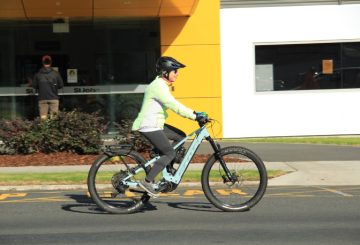Simula Lunes, ang buhay ay magiging mas abot-kayang para sa maraming mga New Zealand dahil sa mga pagbabago na magkakabisa sa Hulyo 1, ayon sa Punong Ministro na si Christopher Luxon. Ang isang makabuluhang pagbabago ay ang pag-alis ng Auckland regional fuel tax, na makakatipid ng mga motorista na 11.5 sentimo bawat litro. Binibigyang diin ni Luxon na ang pag-save na ito ay makabuluhan, lalo na sa mga mahirap na panahon
Sa kabila ng pag-alis ng buwis sa gasolina, ang gobyerno ay patuloy na mamuhunan nang malaki sa transportasyon, kabilang ang sa Auckland. Binanggit din ni Luxon na halos $4 bilyon ang inilalaan upang ayusin at maiwasan ang mga lubak sa mga highway ng estado at mga lokal na kalsada sa susunod na tatlong taon. Kasama dito ang $478 milyon para sa pag-iwas sa lubak sa Auckland, isang 74% na pagtaas mula sa nakaraang tatlong taong panahon.
Ang pagpopondo para sa mga serbisyo sa pampublikong transportasyon sa buong bansa ay nakatakda ring tumaas ng 41% kumpara sa nakaraang tatlong taon. Ang isa pang pagbabago na nagkakabisa sa Hulyo 1 ay ang bagong pagbabayad ng FamilyBoost. Papayagan nito ang mga pamilyang may maliliit na bata na mag-claim ng hanggang sa 25% ng kanilang mga bayarin sa edukasyon sa maagang pagkabata, hanggang sa maximum na $150 bawat dalawang linggo.
Tataas din ang bayad na leave ng magulang, na may maximum na lingguhang rate na tumataas mula $712.17 hanggang $754.87. Naniniwala si Luxon na ang mga hakbang na ito ay makakatulong sa suportahan ang mga pamilya sa mga mahalagang maagang yugto ng buhay ng isang bata
Kinikilala ng Luxon ang mga hamon sa ekonomiya na kinakaharap ng New Zealand ngunit nananatiling optimista Itinuro niya ang mga hula ng Badyet ng Treasury, na huhulaan ang isang pagpapabuti na pananaw, na may kontroladong implasyon, bumaba ang mga rate ng interes, at pagbabawi ng paglago. Nabanggit din niya na nakita ng mga presyo ng pagkain ang pinakamaliit na pagtaas mula noong Setyembre 2018.
Nagtatapos ng Luxon sa pamamagitan ng pagsasabi na patuloy na muling muling muli ng gobyerno ang ekonomiya upang maunlad ang mga manggagawa, negosyo, at pamilya. Naniniwala siya na ang mga hakbang sa gastos ng pamumuhay na ipinatupad ay makakatulong sa mga New Zealanders na mag-navigate sa mga mahihirap



















































-360x245.jpg)









